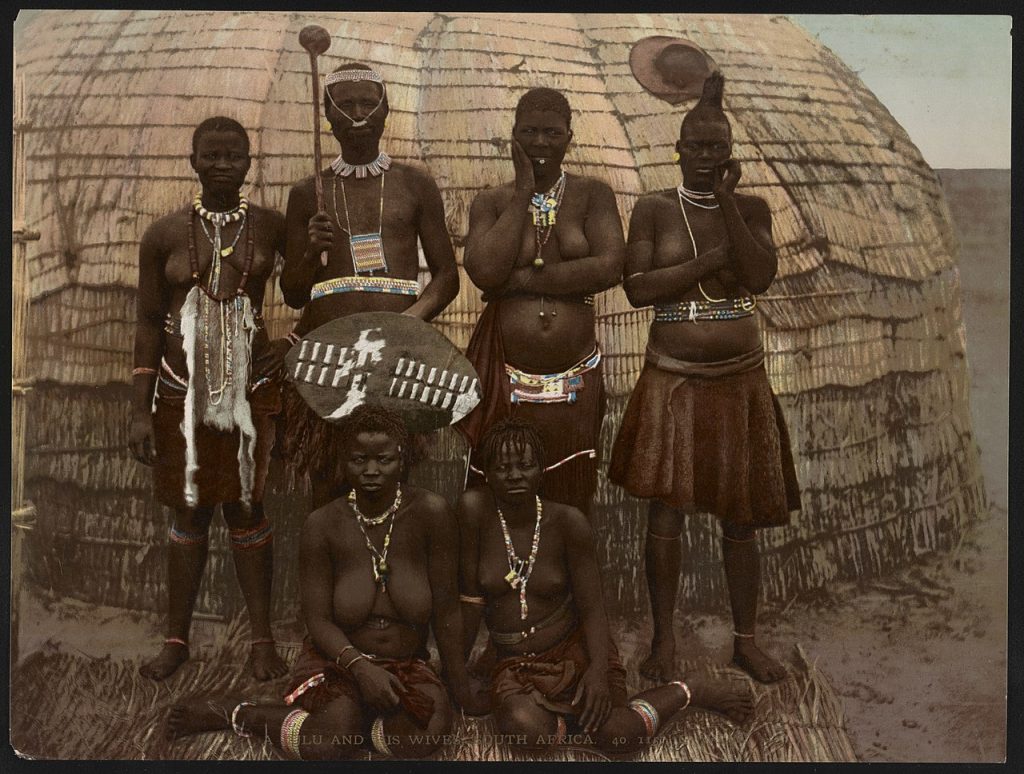9.8 Marital Systems
Marriage is considered a human universal. That is, every studied culture has some form of marriage ritual or way of identifying two or more individuals as “coupled.” What is interesting from an evolutionary perspective is that the marital system most prominent in any culture is often closely connected to the availability of resources in that area. When there are fewer resources, polygamy is more common.
Monogamy
As previously discussed, humans are considered serially monogamous. We tend to mate with one person at a time, regardless of the timeframe. This may accrue to multiple partners over our lifetimes, one after the other. It can also result in one or two long-term, deeply bonded relationships.
The presence of little sexual dimorphism in humans is one of the key pieces of evidence that this has been our evolutionary state. As far back as Australopithecus afarenis, paleoanthropologists identify monogamy through fossil records. The First Family is said to provide some of the first evidence of this transition in the hominin lineage.
Polygamy, Polygyny, and Polyandry
Polygamy means “multiple marriage.” It simply means there is a central member of a relationship, whether male or female, and that they have at least two marital partners.
The most well-known form of polygamy is polygyny. In this case, one man is married to multiple wives. This can occur when there is a lack of resources, leading to fewer, quality males with whom to partner. In some societies, women take pride in participating in a polygynous marriage, because it suggests their husband is wealthy enough or holds high enough social status to be capable of affording multiple wives – and multiple children from those wives. This is especially relevant to small chiefdoms, like the Zulu tribe of Africa.

In some cases, distribution of wealth is constrained. This can lead to polyandry. In polyandry, one woman marries multiple men. This is significantly less common than polygamy or monogamy. For example, in Nepal, fraternal polyandry is frequently practiced. This results in one woman marrying a set of brothers. It is her duty to provide a son to each brother, in order of their birth. This is a strong enough expectation and belief, that paternity may not be relevant when determining the cultural father.
In contrast with polygamy, where resources may be constrained, in polyandry, it is the dilution of wealth which is protected. Because of the mountainous region, fathers choose to share their wealth with all sons – under a single marriage. This avoids the dilution of wealth that results when distributing a finite resource, like land, amongst a growing number of offspring and descendants.
Polyamory
Polyamory is a relatively new marital system emerging in industrial and post-industrial societies (like the U.S.). While polyamory may appear similar to polygyny or polyandry, it differs in one crucial way – neither the wife(s) or husband(s) have full decision-making authority. Instead, whether a group of three, four, or more, polyamorous partners focus heavily on democratic decision-making, jealousy management, and explicit rules regarding extra-partner relationships outside the core group.
There is still little scholarly work on polyamorous partnerships. How do they divide household labor, distribute resources, or share space? Do they raise children, and if so, how does the marital system impact childcare and familial connections? As an increased number of scholars seek to diversify the study of marital systems and human mating practices, we are likely to see more work on these partnerships.
Marriage in Evolutionary Terms
We see a pattern develop as we look at human marital systems and partnerships. Unlike chimpanzees, gorillas, and gibbons, who tend to practice a specific mating strategy, human strategies seem to run the gamut of formats. Like so many human traits, our mating practices are flexible and responsive to our environment and resource availability. We could say human mating is plastic. As such, when studying human partnerships, it is important to step back and look at the current environment where the behavior occurs. Are resources plentiful, supporting individual, monogamous bonds? Are resources constrained, such that successful males attract and support more females? Or is the environment such that efforts to avoid a dilution of wealth result in fraternal polyandry? Most likely, we will continue to change and refine our mating practices further as our socioeconomics, culture, and climate continue to change.
the practice of engaging in a succession of monogamous sexual relationships.
any mating system where a female or a male marries two or more members of the opposite sex.
a mating or marital system in which one man is associated with multiple wives.
mating or marital system in which one female is associated with multiple husbands.
the ability of an individual genotype to produce different phenotypes in response to the environment.

